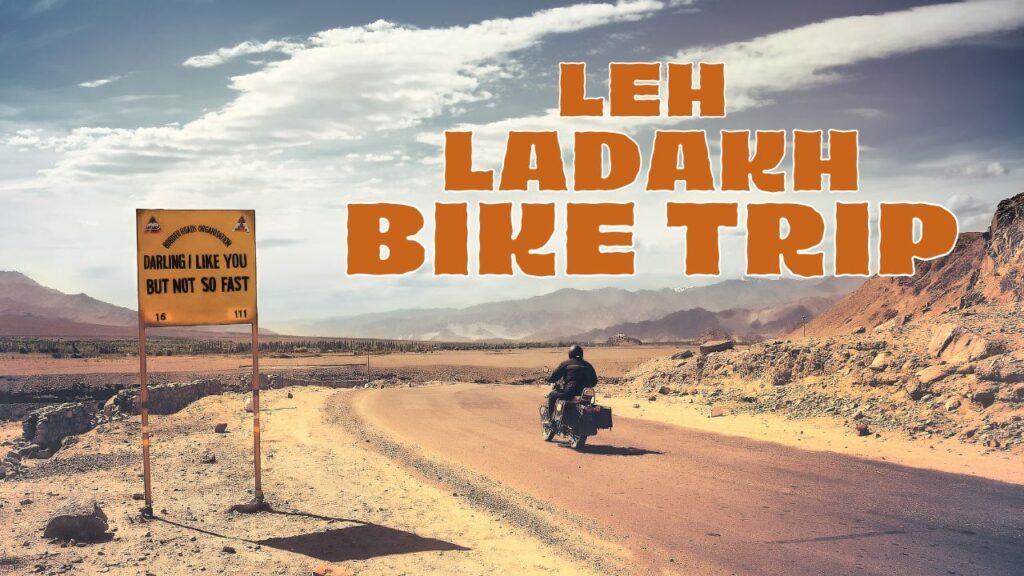A Leh Ladakh Bike Tour is undoubtedly one of the most thrilling and scenic journeys any adventure enthusiast can experience. However, while the landscapes are breathtaking, the routes to reach Ladakh can pose significant challenges and dangers due to unpredictable weather, steep climbs, narrow passes, and rough terrains. In this article, we will explore the most dangerous routes that bikers must prepare for during their Leh Ladakh Bike Tour, especially if you are planning your ride with Cazel Group, known for its well-curated and safe bike tour packages.
Why Are Some Routes in Ladakh Considered Dangerous?
The geography of Ladakh is rugged and unforgiving. High-altitude mountain passes, fluctuating weather conditions, landslides, low oxygen levels, and lack of mobile network connectivity make some routes riskier than others. These elements combine to create routes that demand extreme focus, physical fitness, and mechanical preparedness.
- Manali to Leh Highway
One of the most popular and scenic routes, the Manali to Leh highway is also one of the riskiest. This route spans around 470 km and includes several high-altitude passes such as:
- Rohtang Pass (13,050 ft): Known for frequent landslides, unpredictable snow, and muddy roads.
- Baralacha La (16,040 ft): A remote pass often covered in snow, with chilling temperatures and potential roadblocks.
- Tanglang La (17,480 ft): The third-highest motorable pass in the world, known for sharp turns, steep inclines, and low oxygen levels.
Though the route is well-traveled, it’s essential to be prepared for long stretches without fuel stations, basic amenities, or medical help.
- Srinagar to Leh Highway
While this route is relatively smoother than Manali-Leh, it has its own set of dangerous points, especially:
- Zoji La Pass (11,575 ft): Infamous for its narrow pathways, slippery terrain, and high-altitude snowstorms. Traffic jams and military convoys often cause delays.
- Fotu La and Namika La: These lesser-known passes pose a challenge due to strong crosswinds and sudden elevation changes.
This route is longer in terms of distance but provides better acclimatization. Still, riders should remain cautious, especially around sharp curves and blind corners.
- Leh to Nubra Valley via Khardung La Pass
The road to Nubra Valley via Khardung La, which stands at a staggering height of 18,380 ft, is one of the top highlights of the Leh Ladakh Bike Tour. However, its altitude and terrain make it one of the most dangerous routes:
- Black ice is common during early mornings and evenings, making the road slippery.
- Thin air and oxygen deficiency at the top can cause breathlessness and fatigue.
- The road often has sections with loose gravel, melting snow, and potholes.
Even though the route is well-maintained by the BRO (Border Roads Organization), weather can change rapidly, affecting visibility and road conditions.
- Leh to Pangong Lake via Chang La Pass
Another favorite among travelers, this route offers spectacular views but passes through Chang La, the third-highest motorable pass. This stretch includes:
- Steep climbs and unpaved roads near the top.
- Frequent snowfall that leads to slushy and slippery conditions.
- Remote areas with limited vehicle movement, making breakdowns especially risky.
Riders must ensure their bikes are in excellent condition before attempting this section of the journey.
- Leh to Tso Moriri via Chumathang
Though less explored, the route from Leh to Tso Moriri Lake is equally risky:
- Sparse population and limited help if your vehicle breaks down.
- Lack of fuel stations and phone networks.
- Multiple river crossings, which become difficult afternoon due to rising water levels.
This route requires riders to carry extra fuel, tools, and sufficient food and water supplies.
How to Prepare for Dangerous Routes on a Leh Ladakh Bike Tour?
When you choose a travel expert like Cazel Group, a lot of the stress related to route safety is minimized. However, here are crucial things every rider should keep in mind:
- Bike Maintenance: Ensure your bike is serviced, tires are checked, and brakes are functioning properly.
- Ride During the Day: Avoid riding early mornings or after sunset to reduce risks.
- Gear Up: Always wear protective riding gear including helmets, knee and elbow guards, and thermal wear.
- Acclimatize: Spend a day or two in Leh before hitting higher passes.
- Stay Hydrated: Drink water regularly to combat altitude sickness.
- Emergency Kit: Carry a first-aid kit, oxygen cylinder, spare parts, and essential medicines.
Which Route Should Beginners Avoid?
If you’re new to mountain biking, it’s best to avoid routes like:
- Rohtang Pass in the early season due to mudslides.
- Chang La and Khardung La in the winter because of snow and ice.
- Tso Moriri route if you’re riding solo without a backup vehicle.
Starting with the Srinagar to Leh route is generally safer for first-time riders because of the gradual increase in altitude and better road conditions.
Conclusion
A Leh Ladakh Bike Tour offers a life-changing experience, blending adrenaline, adventure, and the serenity of the mountains. However, being aware of the dangerous routes and taking the right precautions is essential to enjoy the trip safely. Whether you’re an experienced rider or a first-timer, trust professional tour organizers like Cazel Group who prioritize safety, comfort, and expert guidance across all terrains. With the right planning and awareness, your journey through Ladakh can be both exhilarating and safe.












